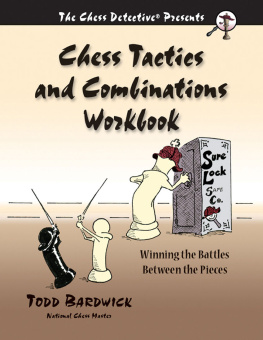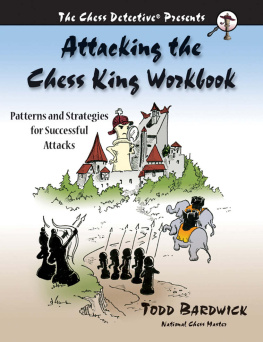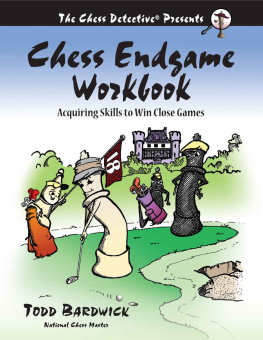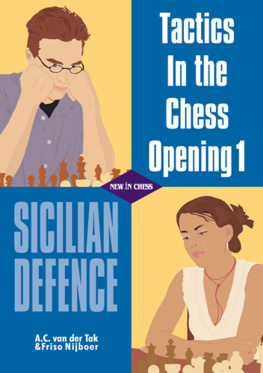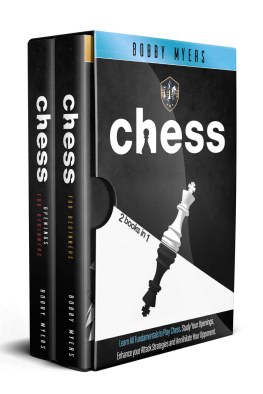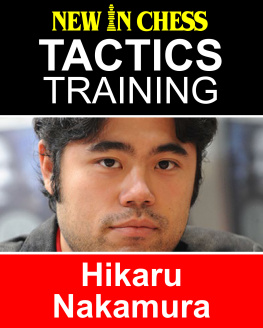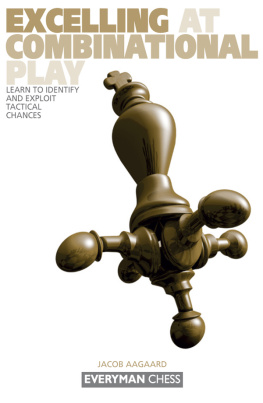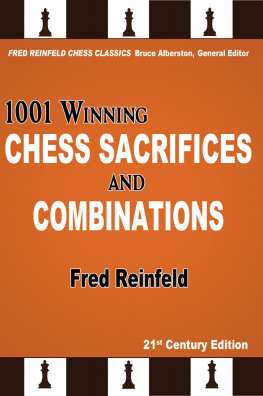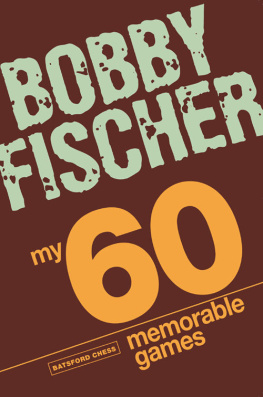Chess Detective Press
Illustrations by John Weiss and Kevin Hempstead
Chess Tactics and Combinations Workbook
Winning the Battles Between the Pieces
Copyright 2019 by Todd Bardwick. Printed and bound in the United States of America. All rights reserved. No part of this book shall be reproduced in any form or by any electronic or mechanical means including information storage and retrieval systems without permission in writing from the publisher, except by a reviewer, who may quote brief passages in a review. Included in these reserved rights are publishing on the Internet or in annotated databases. Published by Chess Detective Press, 1 Red Fox Lane, Englewood, Colorado 80111. 303-770-6696. First Edition.
First printing: June 2019
www.ColoradoMasterChess.com
ISBN-13: 978-0-9761962-3-5
Library of Congress Control Number: 2019940015
Library of Congress Cataloging-in-Publication Data available upon request
DEDICATION
This book is dedicated to chess students everywhere who will use these tactical ideas to improve their chess skills and enjoyment of the game as well as apply the lessons learned through chess to help them succeed and make logical decisions in everyday life.
May you calculate combinations accurately and your king always be safe!
Contents
INTRODUCTION
Chess can be broken down into the basic categories of strategy and tactics.
Strategy is developing the best plan to achieve your goals. Chess Strategy Workbook focuses on the strategic aspect of the game.
Tactics are the battles between pieces. The player with more space and more active pieces on optimal squares has an advantage because, all things being equal, that players pieces have more freedom and opportunity to create threats.
Tigran Petrosian (World Champion from 1963-69) once said, Although to many this seems strange, in general I consider that in chess everything rests on tactics. If one thinks of strategy as a block of marble, then tactics are the chisel with which a master operates, in creating works of chess art.
This book focuses on basic chess tactics and more complex combinations.
Combinations are a group of individual tactics working together that can be quite simple or so complex they challenge the worlds best players. When each move is played in an exact correct sequence, the beauty of chess as an art form is evident.
Move order is important. If a combination doesnt work in the move order you are considering, try reversing the moves and play the second move first and the first move you are considering second. This move reversal sometimes makes the combination work.
Combinations are often a series of forcing moves where the moves alternate between a threat and a response to that threat. The player on the attack is said to have the initiative. Goals of a successful combination can be checkmating the king, gaining a material advantage, achieving a better pawn structure, activating ones pieces, escaping from a difficult position, or simplifying to a winning endgame.
Reuben Fine said, Combinations have always been the most intriguing aspects of chess. The masters look for them, the public applauds them, and the critics praise them. It is because combinations are possible that chess is more than a lifeless mathematical exercise. They are the poetry of the game; they are to chess what melody is to music. They represent the triumph of mind over matter.
Repetition and pattern recognition are important in mastering combinations as this sharpens your mind to find tactical patterns. This book presents carefully selected examples from master and grandmaster games to hone your tactical skills. An experienced player may recognize some of the more famous positions.
Most chess players focus all their attention on finding the best move. You cannot correctly determine the best move without first understanding the position. Picking up clues and observing how the pieces are lined up is critical - you need to be a good detective and look for strengths and weaknesses in the position, which may be in the form of an exposed king, pieces lined up for a potential pin or fork, a potential back rank mate, an overworked piece, pieces that interfere with another piece getting to a critical square, or maybe a piece that is surrounded by its enemies and could be trapped.
Before reading this book, you should have a working knowledge of chess basics, which you can gain by reading Chess Workbook for Children (which is also good for adults).
One of the most basic elements of tactics is counting how many times a piece or square is attacked and defended. This is often not highlighted in tactics books. It is like asking how many good guys are there and how many bad guys are there when going to battle. Outnumbering your opponent is important in gaining an advantage.
The book is organized into ten categories of tactics.
Pins When a queen, rook, or bishop is lined up with two enemy pieces where the less valuable piece shields a more valuable piece or an important square.
Skewers The reverse of a pin, where the more valuable piece is lined up in front of a less valuable piece.
Forks A double attack where two or more pieces are attacked at the same time by the same piece, often leaving the opponent with the choice of which piece to save.
Discoveries and Windmills Another type of double attack where the moving piece can make a threat and the long-range piece behind it attacks an opposing piece or critical square which was shielded by the moving piece. A windmill is when this occurs multiple times at the same location.
Attraction When a piece is offered for free, using the piece as a decoy, daring the opponent to take it. Attractions are analogous to sacrifices.
Removing the guard Eliminating or forcing a piece to move that is protecting one or more pieces or squares. A piece with too many defensive responsibilities is called an overworked piece.
Clearance and Interference Clearing the path for one of ones own pieces or interfering with the movement of the opponents pieces.
Zwischenzugs A surprise in-between move that breaks the sequence of an expected series of moves or captures.
Pawn Tactics Push, sit, or takes (captures) with pawns.
Trapped Pieces Back rank mates and smothered mates where the king is trapped and situations where other pieces are trapped and cant escape.
Just as they appear in the other books in the Chess Detective Series, Appendices A and B are repeated here in order to give practical advice and reinforce consistent themes.
Appendix A is a supplement that identifies the common chess mistakes made by the novice/intermediate chess player. As you go through the list, think of it as a checklist to see what you are doing correctly and what items you need to work on.
Appendix B addresses what a chess player should be thinking about during the game when it is their move and when it is the opponents move. These steps will structure your thoughts and keep your mind thinking in an efficient, organized way.
The solutions to the problems at the end of each lesson are explained in detail in Appendix C . Each lesson contains ten Basset Hound and ten Chess Detective problems. Reading through the detailed solutions carefully is a great learning opportunity. For most of the problems, the complete answer is much longer than the answer space provided. When this is the case, use a separate piece of paper to write your answer on. My goal is to present lots of problems and examples, not fill the pages with blank lines for the answers!

